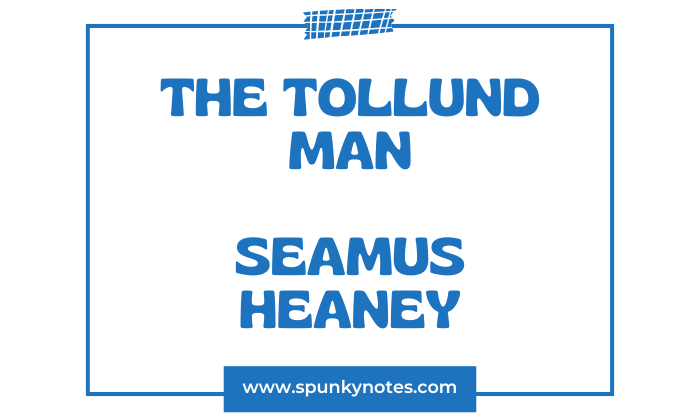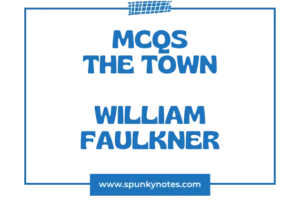

Estimated Reading Time: 13 min
Seamus Heaney, the renowned Irish poet, wrote about the Tollund Man in his poetry collection titled “Wintering Out” (1972).
The Tollund Man is one of the most famous Bog Bodies found in the bogs of Northern Europe, remarkably preserved since the Iron Age.
Discovered in 1950 in a peat bog near Silkeborg, Denmark, the Tollund Man has fascinated archaeologists, historians, and artists alike due to the extraordinary preservation of his features and the noose still around his neck, suggesting ritual sacrifice.
Analysis of The Tollund Man by Seamus Heaney
Some day I will go to Aarhus
To see his peat-brown head,
The mild pods of his eye-lids,
His pointed skin cap.
Some day I will go to Aarhus
Seamus Heaney’s poem “The Tollund Man” begins with a statement about a future visit to Aarhus, Denmark. This visit aims to see the Tollund Man, an Iron Age bog body found in 1950, preserved in a peat bog.
The poem connects this ancient body to the violence in Northern Ireland during the 20th century. Heaney uses this historical figure to discuss violence and death. It suggests that these issues are not new but have been part of human history for centuries.
The poem suggests a link between past sacrifices and conflicts, indicating that understanding history can help us comprehend current events.
To see his peat-brown head,
“His peat-brown head” refers to the Tollund Man, specifically the colour and condition of his preserved head.
The term “peat-brown” directly associates the body with the bog, emphasizing how the natural environment has preserved the body over centuries.
The mild pods of his eye-lids,
It describes the gentle appearance of the eyelids, suggesting they are soft and peaceful, similar to pods. This imagery highlights the calm and preserved state of the Tollund Man’s face.
It shows how natural and undisturbed he appears despite being over a thousand years old.
“Mild” suggests a gentleness or calmness in the appearance of the closed eyelids, possibly contrasting with the presumed violence of his death.
His pointed skin cap.
It draws attention to an actual item the Tollund Man was found wearing. The cap is a tangible link to his past, a fragment of the life he lived.
The adjective “pointed” adds a sense of the ancient or archaic, emphasizing the historical and cultural distance between the poet and this Iron Age figure.
In the flat country near by
Where they dug him out,
His last gruel of winter seeds
Caked in his stomach,
In the flat country near by
This line sets the geographical context. It describes the landscape around the area where the Tollund Man was discovered.
“Flat country” suggests a vast, open, and possibly unremarkable terrain, which contrasts with the remarkable nature of the discovery made there.
Where they dug him out,
This line refers to the act of excavating the Tollund Man from the bog.
The phrase “dug him out” is straightforward and blunt, reflecting the physical process of unearthing ancient remains. It grounds the poem on a specific historical moment, the discovery of the Tollund Man.
His last gruel of winter seeds
Here, Heaney describes the contents found in the Tollund Man’s stomach.
“Gruel” suggests a thin, porridge-like meal, and “winter seeds” might indicate the type of food he last consumed, which also helps date the season of his death.
Caked in his stomach,
The use of “caked” in this line emphasizes the passage of time and the preservation process. It shows the remnants of his last meal being preserved inside his body, almost fossilized.
This detail not only provides a physical connection to his final days but also symbolizes how aspects of the past remain embedded and preserved, ready to be rediscovered and examined.
Naked except for
The cap, noose and girdle,
I will stand a long time.
Bridegroom to the goddess,
Naked except for
The cap, noose and girdle,
This line describes the Tollund Man’s state when he was found. He was “naked” except for three items: a cap, a noose, and a girdle.
This minimal attire emphasizes the vulnerability and the ritualistic aspect of his death. The noose particularly suggests that his death was a form of sacrifice or execution.
The cap and girdle, being the only articles of clothing, also hint at some ceremonial significance.
I will stand a long time.
The use of “I” here suggests the poet is either identifying with the Tollund Man or speaking from his perspective.
It shows the enduring nature of the Tollund Man’s legacy, which has stood the test of time as a witness to history.
Bridegroom to the goddess,
The term “bridegroom” suggests a marriage-like union, but in this context, it likely refers to a ritual sacrifice of the Tollund Man as an offering to a goddess.
This refers to the earth or nature as a goddess or to ancient pagan rituals where such sacrifices were believed to appease deities. It shows that the Tollund Man was intimately connected to his time’s spiritual or religious beliefs.
She tightened her torc on him
And opened her fen,
Those dark juices working
Him to a saint’s kept body,
She tightened her torc on him
This line personifies the bog (or nature) as a female figure, perhaps a goddess, who is actively involved in the process of preserving the Tollund Man.
A “torc” is a rigid neck ring or bracelet from the Iron Age, often associated with ritual and status.
The imagery of tightening a torc could symbolize the bog’s embrace, holding the Tollund Man in a state between life and death.
And opened her fen,
The “fen” refers to the bog itself. The phrase “opened her fen” suggests the bog welcomes or engulfs the body. This highlights the bog as a living, active entity, almost like it’s participating in a preservation ritual.
“Fen” refers to a type of wetland. Fens are low-lying areas, often near rivers or streams, that accumulate peat partially decomposed organic matter.
They are similar to bogs but are usually less acidic and have more nutrient-rich water sources.
In the context of the poem, the “fen” is significant because it’s the kind of environment in which the Tollund Man, a naturally preserved bog body, was found.
Those dark juices working
“Dark juices” alludes to the acidic, oxygen-poor environment of the bog, which is responsible for the remarkable preservation of bodies like the Tollund Man’s.
Him to a saint’s kept body,
This line draws a powerful parallel between the preserved state of the Tollund Man and the venerated bodies of Christian saints, which were often kept for their supposed miraculous qualities.
Trove of the turfcutters
Honeycombed workings.
Now his stained face
Reposes at Aarhus.
Trove of the turfcutters
The word “trove” refers to a valuable collection or discovery, often of historical or archaeological significance. “Turfcutters” are people who cut peat from bogs for use as fuel.
In this context, the line suggests that the discovery of the Tollund Man was a remarkable find for those working in the bog, an unexpected treasure emerging from their everyday labor.
Honeycombed workings.
It describes the structure and appearance of the bog, likening it to a honeycomb. This shows the pattern of cuts and excavations made by turfcutters in the peat.
Now his stained face
The term “stained” here reflects the physical impact of the bog on the Tollund Man’s body.
Over centuries, the acidic environment of the fen would have tanned and darkened his skin, leading to its well-preserved but stained appearance.
Reposes at Aarhus.
Finally, this line locates the Tollund Man geographically, stating that he is now resting in Aarhus, a city in Denmark.
The use of the word “reposes” imparts a sense of dignity and peace, as if after his long journey through time, the Tollund Man has found a final resting place where he can be honored and studied.
II
I could risk blasphemy,
Consecrate the cauldron bog
Our holy ground and pray
Him to make germinate
I could risk blasphemy,
This line indicates the poet’s willingness to challenge conventional religious beliefs or doctrines.
Heaney suggests that his reverence for the bog and what it represents could be seen as sacrilegious or irreverent from a traditional religious standpoint.
Consecrate the cauldron bog
To “consecrate” something is to make it sacred or holy. The “cauldron bog” here symbolizes the bog where the Tollund Man was found, imbuing it with a sacred quality.
The term “cauldron” evokes images of transformation and alchemy, suggesting that the bog has the power to change or preserve what it contains.
Our holy ground and pray
Heaney continues the theme of sanctity, referring to the bog as “our holy ground.”
This phrase elevates the natural landscape to a spiritual status. “Pray” implies a spiritual or religious act, highlighting the depth of his reverence for this place and its historical significance.
Him to make germinate
This line suggests a hope or plea to the Tollund Man, asking him to bring forth new life or understanding. “Germinate” typically refers to a seed starting to grow, symbolizing the potential for new life or rebirth.
This could be Heaney’s metaphorical wish for healing or rejuvenation, perhaps in the context of the violence in Northern Ireland during his time.
The scattered, ambushed
Flesh of labourers,
Stockinged corpses
Laid out in the farmyards,
The scattered, ambushed
Flesh of labourers,
These lines likely reference the victims of political violence, drawing a parallel between the ancient sacrifice of the Tollund Man and contemporary losses.
This likely points to the harsh realities faced by some individuals, possibly referencing historical or contemporary events where labourers were victims of violence or conflict.
Stockinged corpses
Laid out in the farmyards,
This imagery is stark and harrowing, painting a picture of bodies (perhaps those of civilians or everyday workers) left exposed after acts of violence.
“Stockinged corpses” refers to dead bodies that are wearing stockings, adding a touch of normalcy and humanity to the victims. It indicats that they were ordinary people caught up in extraordinary and tragic circumstances.
Tell-tale skin and teeth
Flecking the sleepers
Of four young brothers, trailed
For miles along the lines.
Tell-tale skin and teeth
The phrase “tell-tale” suggests evidence or signs revealing a story or truth.
“Skin and teeth” being the only remaining parts of a body implies extreme decomposition or violence, leaving behind the most durable parts of the human body. This imagery disturbing, evoking a sense of the brutality and the finality of death.
Flecking the sleepers
The word “flecking” here means spotting or dotting.
Literal Interpretation
(Railway Context)
If “sleepers” are railway sleepers (the wooden or concrete beams that support the rails on a railway track), then “flecking” could refer to small fragments or residues (possibly from a violent event) scattered across these beams.
This image could evoke a scene where a violent act has occurred near or on a railway line, leaving traces on the sleepers.
Metaphorical Interpretation
(Death and Violence)
Alternatively, “sleepers” might metaphorically refer to people who are dead, in a state of eternal rest, or ‘sleeping’ in death.
In this interpretation, “flecking” could suggest the remnants or impacts of violence marking these individuals.
Symbolic Interpretation
(History’s Imprint)
On a more symbolic level, “flecking the sleepers” could represent the way history leaves its mark on the present and future.
In this sense, the ‘sleepers’ could symbolize those who are unaware or ‘asleep’ to the lessons of history, with the ‘flecking’ being the recurrent reminders of past violence and sacrifice.
Of four young brothers, trailed
This line introduces specific victims “four young brothers” which personalizes and intensifies the tragedy. The use of “young” highlights their innocence and the senselessness of their deaths.
For miles along the lines.
This line continues the imagery of a railway, suggesting that the bodies were dragged along the railway lines for miles.
The mention of “miles” amplifies the extent and brutality of the violence, making it not just a localized incident but a prolonged and far-reaching one.
III
Something of his sad freedom
As he rode the tumbril
Should come to me, driving,
Saying the names
Tollund, Grauballe, Nebelgard,
Watching the pointing hands
Of country people,
Not knowing their tongue.
Something of his sad freedom
As he rode the tumbril
This imagery connects the Tollund Man’s final journey to his death with the image of a tumbril, a cart used to transport prisoners to execution during the French Revolution.
The “sad freedom” could refer to the Tollund Man’s release from life through death, a freedom that comes with the ultimate price.
Should come to me, driving,
Saying the names
This act of saying the names while on a journey suggests a personal pilgrimage or a quest for understanding. There’s a sense of seeking connection with these ancient figures through their names.
Tollund, Grauballe, Nebelgard,
These are the names of bog bodies (Tollund Man, Grauballe Man) and a bog site (Nebelgard). By listing them, Heaney is acknowledging these ancient individuals and places, bridging the gap between past and present.
Watching the pointing hands
Of country people,
This line depicts a scene where locals are possibly showing or discussing these historical sites. The “pointing hands” indicate a direct, physical connection to the land and its history, which the speaker observes.
Not knowing their tongue.
The speaker admits to a language barrier, symbolizing a broader gap in understanding.
This line speaks to the challenge of fully grasping the historical and cultural contexts of the past when separated by time, language, and cultural differences.
Out here in Jutland
In the old man-killing parishes
I will feel lost,
Unhappy and at home.
Out here in Jutland
Jutland is the peninsula that forms the mainland part of Denmark and Germany.
By specifying this location, Heaney grounds the poem in a real geographic setting, the same region where the Tollund Man and other bog bodies were discovered.
This reference sets the stage for the personal reflection that follows.
In the old man-killing parishes
This striking phrase evokes a sense of history laden with violence and death. “Man-killing” likely refers to the ancient practices of ritual sacrifice, as evidenced by the bog bodies.
The use of “parishes” gives a sense of community and organized societal structure, linking these ancient practices to more organized, communal activities.
I will feel lost,
Heaney expresses a feeling of disorientation or disconnection here. Being in a land so rich with a history that is not his own, he acknowledges a sense of being out of place or lost in time and space.
Unhappy and at home.
This line encapsulates a profound paradox. The poet feels “unhappy,” possibly due to the unsettling nature of the violent history he is confronting or the sense of alienation in a foreign land.
Yet, he simultaneously feels “at home,” suggesting a deep, perhaps inexplicable, connection to the place and its history.
This could stem from his fascination with the bog bodies and their stories, or a broader sense of belonging to a shared human past, regardless of the specific geographic or cultural context.


